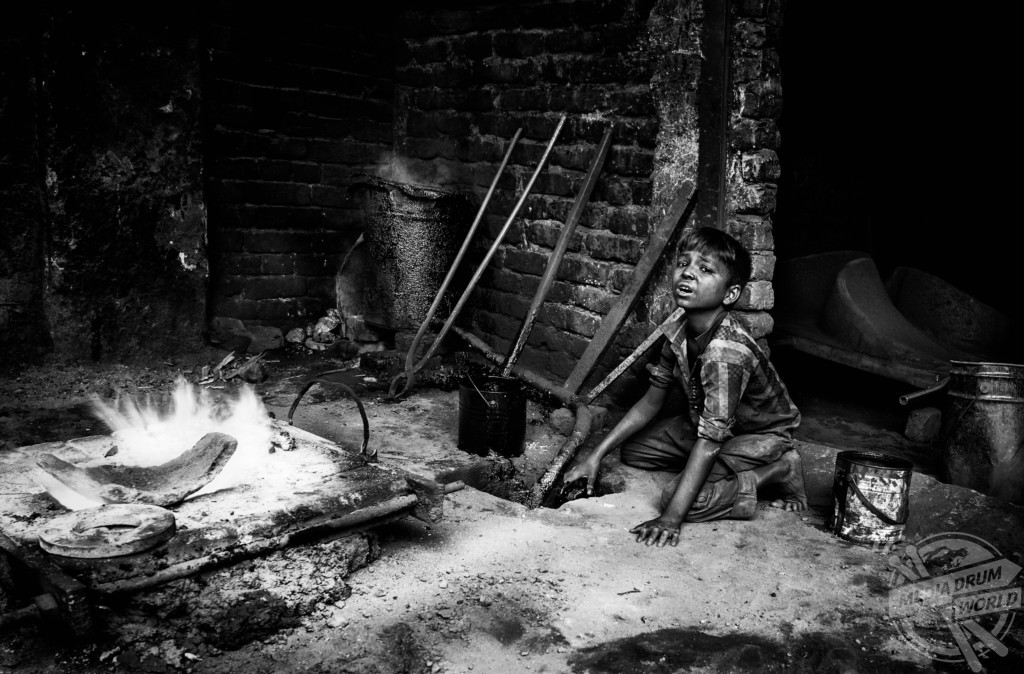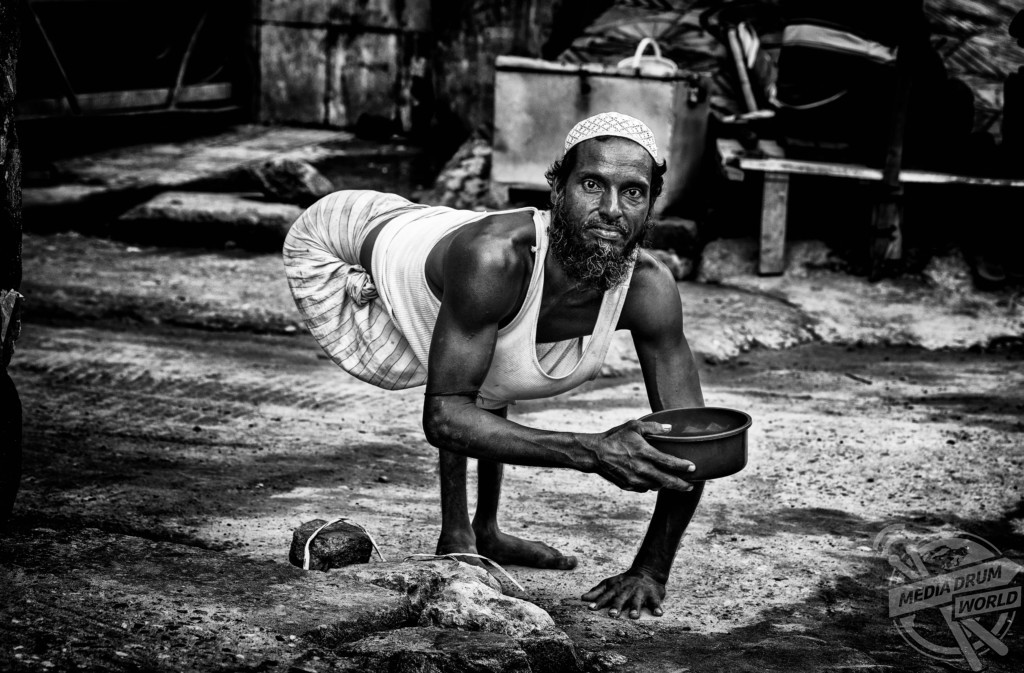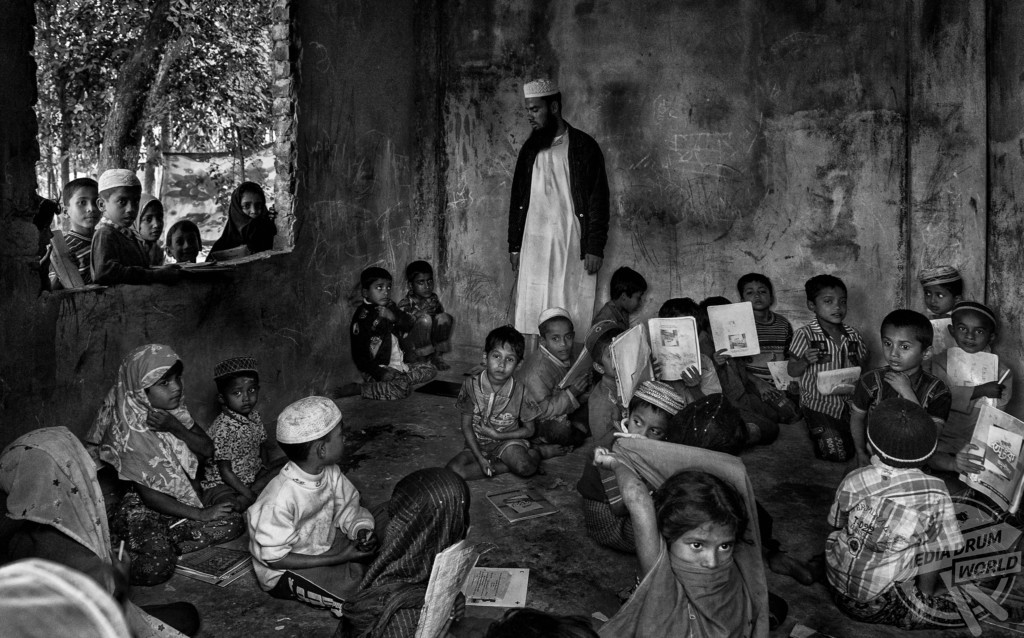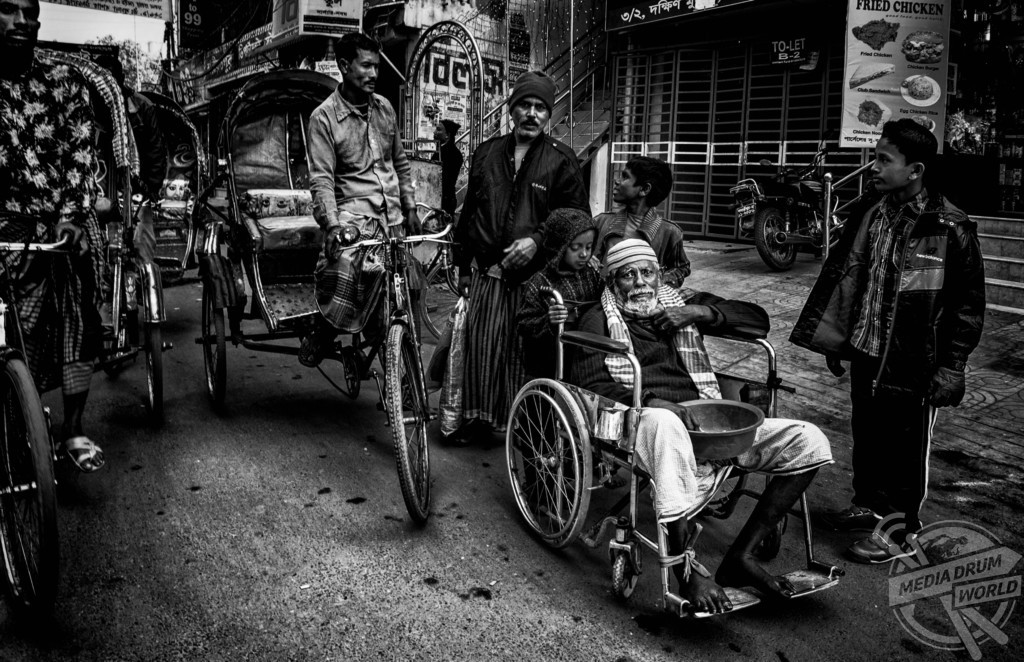By Rebecca Drew
EMOTIONAL MONOCHROME images have been released capturing the gritty hardship of life for the millions of people living in the poverty-stricken slums of Bangladesh.
The series of moving pictures show poverty etched on the faces of some of the country’s poorest people who are forced to live on and beside railway tracks with their families which include small children, a man trying to make ends meet whilst he repairs a pair of jeans for a friend and a young boy kneeling on the dirty floor whilst he works away.

Other powerful black and white shots depict a class of children having a lesson in a shack with scarce school facilities, a man being wheeled through the streets by a younger relative wrapped up in plenty of layers and a group of workers keeping themselves warm huddled around a fire.
One photo shows a disabled man carrying a bowl through the streets, whilst another shows a man carrying heavy bricks on his shoulders.
The breath-taking images were taken in Chittagong and Dhaka, Bangladesh, by civil servant and hobby photographer, Joxe Inazio Kuesta Garmendia (59) from Lezo, Gipuzkoa, Spain.
“I went to Bangladesh without knowing anything about the country. I went around the streets capturing everything that happened around me with my camera. I saw people doing their usual chores and in their struggle to get ahead in very harsh living conditions,” said Joxe.

“I was surprised by the availability of people to be photographed. Everyone wanted to be photographed. I asked at the hotel the reasons for this and they told me it was because they thought that I worked for a documentary television channel and that they would appear on it.
“That could well have been true because many people showed me their products in the markets, but the truth is that they did not need to tell me anything to understand their situation, I saw it and it is seen in the photos.
“For me it was a total privilege to be out there walking around the streets and having some kind of relationship with these people. I loved approaching them and seeing their reactions, and so on.
“I was shocked many times by watching sick and disable people, many of them without limbs asking for help. It is hard to see people, especially children, working in extreme conditions like these.

“I have to admit that I even cried sometimes. I was surprised by the humanity and kindness of the people, they helped me at all times and treated me with great respect.
“When I travel, which is when I take pictures, I like to see and feel people of different races, religions and customs. I try to approach them with the intention of establishing, if possible, a relationship, which most of the time consists of a shared smile or a greeting.
“If I get to photograph them, I feel doubly happy. I look for the complicity with the people photographed because I think it is the only way to take this kind of photo.
“One important characteristic of my photos is that the people who appear in them are calm, there is no violence in the shot and almost always there is a visual contact.”
Bangladesh is one of the most populous countries in the world with more than 1,100 people packed into every square kilometre and nearly a third of its population is living below the poverty line.
More than two-million people in the capital Dhaka live in the slums and are without proper shelter.
Joxe captured his stunning images using his Nikon D5 camera, a model he has used for two years now and says he simply captures what he sees when he visits other countries.

“When I go out to photograph, I do not think that I have a message to convey, I just see and capture. I want people to know that I am photographing them, I want to express what they feel, what they have to say about their life and the environment that surrounds them,” he said.
“What I do is try to apply my vision in those realities. It is interesting to see the different reactions of people when seeing the pictures.
“Some people express admiration as soon as they see them, others only see the beauty of a look, some feel uncomfortable when seeing the environment in which those people, who look at us, live and there are also those who are indifferent.
“I want to say that if I manage to awaken those feelings that usually cost us so much to admit and express, then I do have the feeling that I am transmitting something.”







